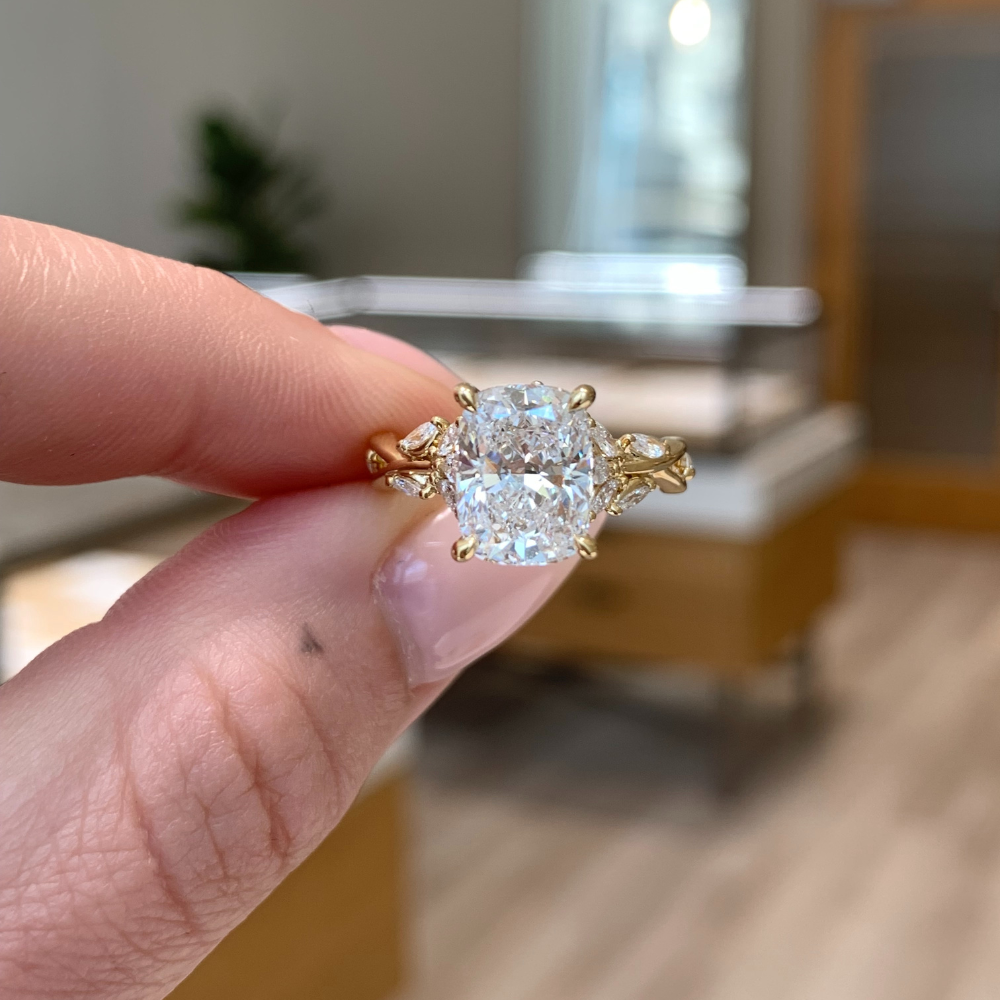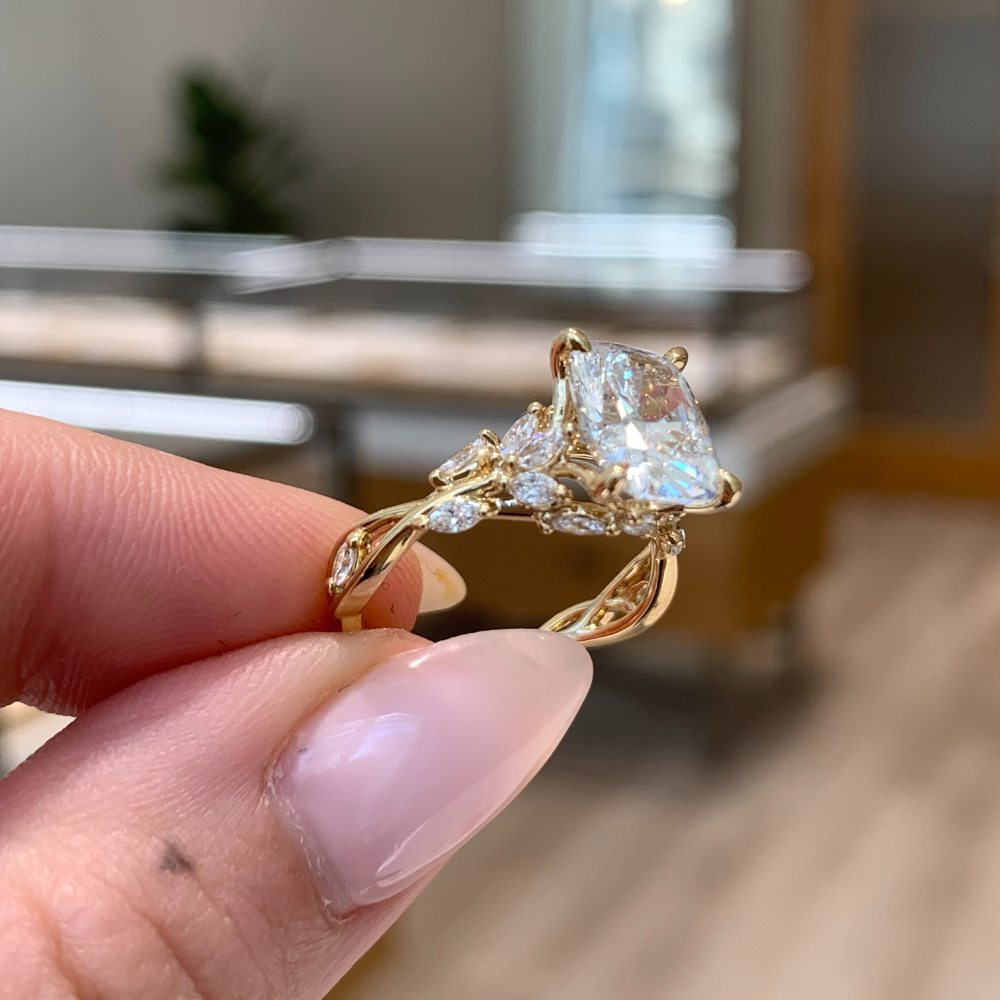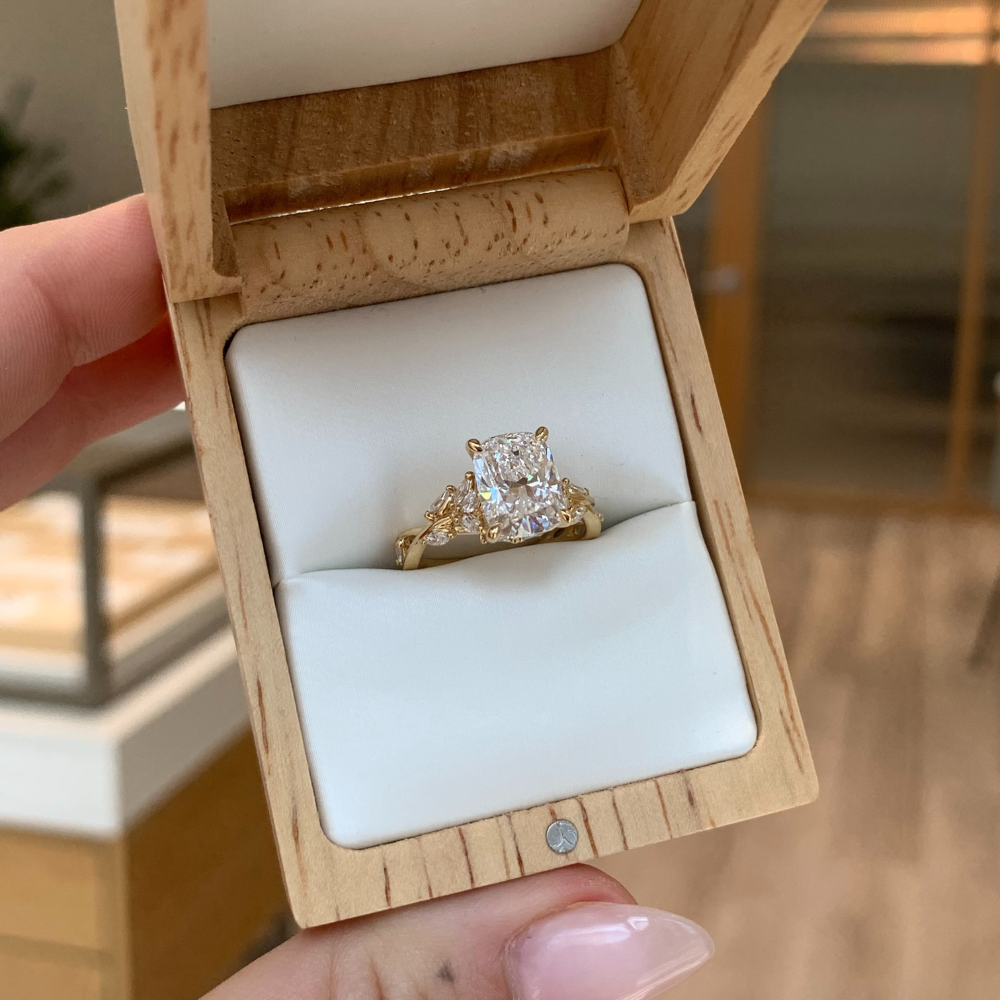A ring appraisal is important in determining the value of a ring, which can be necessary for insurance purposes. This guide will explore the nuances of ring appraisals, focusing on diamond and engagement rings, and provide comprehensive information on how to get a ring appraised, where to get it appraised, and the associated costs.
What is a ring appraisal?
A ring appraisal is a professional evaluation of value, conducted by a certified gemologist or appraiser. This process involves assessing the ring’s characteristics, including the quality of its gemstones, metal type, and overall craftsmanship. The appraiser provides a detailed report that includes a description of the ring, its quality, and its market value. For diamond rings specifically, the appraisal includes an analysis of the diamond’s cut, color, clarity, and carat weight.
Reasons for Getting a Ring Appraisal
There are a few reasons why you’d need to get a ring appraised:
- Insurance: One of the top reasons for an appraisal is for insurance purposes. An accurate appraisal ensures that you have adequate coverage in case of loss, theft, or damage.
- Resale Value: If you are considering selling or trading a ring, an appraisal provides an estimate of its market value, helping you make informed decisions.
- Estate Planning: For inheritance or estate purposes, an appraisal establishes the value of a ring, which is crucial for equitable distribution among heirs.
- Verification: An appraisal can confirm the authenticity and quality of a ring, providing peace of mind about your investment.
How to Get a Ring Appraised
Getting a ring appraised involves several steps:
- Choose a Qualified Appraiser: Check to see if the appraiser is certified by a reputable organization, such as the Gemological Institute of America (GIA) or the American Society of Appraisers (ASA). Certification ensures the appraiser has the expertise needed for a precise evaluation.
- Provide Documentation: If available, provide any previous appraisals, purchase receipts, or certificates of authenticity. This documentation can assist the appraiser in assessing the ring’s value.
- Discuss Specific Needs: Inform the appraiser of any specific requirements, such as whether the appraisal is for insurance or resale, as this may influence the appraisal process and reporting.
Where to Get a Ring Appraised
Ring appraisals can be conducted at various locations:
- Jewelry Stores: Many jewelry stores offer appraisal services. These stores often employ certified gemologists who can provide accurate evaluations.
- Independent Appraisers: Independent appraisers or appraisal firms specializing in jewelry offer impartial assessments. Look for appraisers who are members of professional organizations, such as the National Association of Jewelry Appraisers (NAJA).
- Online Services: Some online services offer ring appraisals, though it is crucial to verify their legitimacy. Always choose reputable and accredited services to ensure accuracy.
How much does it cost to get a ring appraised?
The cost of a ring appraisal varies based on several factors, including the complexity of the appraisal, the appraiser’s fees, and the location of the service. Generally, you can expect to pay between $50 and $150 for a basic appraisal. For more detailed appraisals, such as those involving high-value or intricate rings, costs may be higher. It is advisable to inquire about fees upfront and request a written estimate before proceeding with the appraisal.
At Brilliant Earth, we include a complimentary insurance appraisal with all engagement rings, wedding rings, and finished jewelry over $2,000 USD. For other items, insurance appraisals are available upon request. Please note that insurance appraisals are not included with an exchange or metal credit orders, except if requested.
A ring appraisal is essential in understanding the value of your jewelry. By selecting a certified appraiser and understanding the associated costs, you can ensure a thorough and accurate appraisal process. For further information on engagement ring appraisals, diamond ring appraisals, and more, consult a professional appraiser to make informed decisions.







